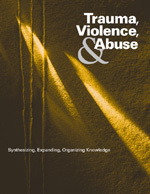
3,4-Methylenedioxymethamphetamine (MDMA), commonly known as ecstasy ; and molly or mandy, is a potent empathogen–entactogen with stimulant properties primarily used for recreational purposes. The desired effects include altered sensations, increased energy, empathy, and pleasure. When taken by mouth, effects begin in 30 to 45 minutes and last three to six hours.

Substance abuse, also known as drug abuse, is the use of a drug in amounts or by methods that are harmful to the individual or others. It is a form of substance-related disorder. Differing definitions of drug abuse are used in public health, medical, and criminal justice contexts. In some cases, criminal or anti-social behavior occurs when the person is under the influence of a drug, and long-term personality changes in individuals may also occur. In addition to possible physical, social, and psychological harm, the use of some drugs may also lead to criminal penalties, although these vary widely depending on the local jurisdiction.
The Substance Abuse and Mental Health Services Administration is a branch of the U.S. Department of Health and Human Services. SAMHSA is charged with improving the quality and availability of treatment and rehabilitative services in order to reduce illness, death, disability, and the cost to society resulting from substance abuse and mental illnesses. The Administrator of SAMHSA reports directly to the Secretary of the U.S. Department of Health and Human Services. SAMHSA's headquarters building is located outside of Rockville, Maryland.
Drug rehabilitation is the process of medical or psychotherapeutic treatment for dependency on psychoactive substances such as alcohol, prescription drugs, and street drugs such as cannabis, cocaine, heroin or amphetamines. The general intent is to enable the patient to confront substance dependence, if present, and stop substance misuse to avoid the psychological, legal, financial, social, and physical consequences that can be caused.
The Journal of Psychoactive Drugs is a peer-reviewed medical journal on psychoactive drugs. It was established in 1967 by David E. Smith and is currently published five times per year by Taylor & Francis. It was previously titled Journal of Psychedelic Drugs until 1980. It was the first journal established in the United States to focus on psychoactive drug use, and continues to introduce groundbreaking work in topics such as drug use and criminality, therapeutic communities, dual diagnosis, psychotherapy/counseling, methadone maintenance treatment, and culturally-relevant substance abuse treatment. According to the Journal Citation Reports, the journal has a 2016 impact factor of 1.740.

Nimetazepam is an intermediate-acting hypnotic drug which is a benzodiazepine derivative. It was first synthesized by a team at Hoffmann-La Roche in 1964. It possesses powerful hypnotic, anxiolytic, sedative, and skeletal muscle relaxant properties. Nimetazepam is also a particularly potent anticonvulsant. It is marketed in 5 mg tablets known as Erimin, which is the brand name manufactured and marketed by the large Japanese corporation Sumitomo. Japan is the sole manufacturer of nimetazepam in the world. Outside of Japan, Erimin is available in much of East and Southeast Asia and was widely prescribed for the short-term treatment of severe insomnia in patients who have difficulty falling asleep or maintaining sleep. Sumitomo has ceased manufacturing Erimin since November 2015. It is still available as a generic drug or as Lavol.
Sex and drugs date back to ancient humans and have been interlocked throughout human history. Both legal and illegal, the consumption of drugs and their effects on the human body encompasses all aspects of sex, including desire, performance, pleasure, conception, gestation, and disease.

The Journal of Studies on Alcohol and Drugs (JSAD) is a peer-reviewed scientific journal that publishes original research articles on various aspects of the use and misuse of alcohol and other drugs. Topics covered include the biological, medical, epidemiological, social, psychological, and legal aspects of alcohol and other drug use, abuse, and dependence. The journal was established in 1940 as the Quarterly Journal of Studies on Alcohol, changed its name in 1975 to Journal of Studies on Alcohol, before obtaining its current name in 2007. The journal appears bimonthly and publishes supplements at irregular intervals. The Journal of Studies on Alcohol and Drugs is a not-for-profit journal based in the Center of Alcohol Studies at Rutgers University.

Substance abuse prevention, also known as drug abuse prevention, is a process that attempts to prevent the onset of substance use or limit the development of problems associated with using psychoactive substances. Prevention efforts may focus on the individual or their surroundings. A concept that is known as "environmental prevention" focuses on changing community conditions or policies so that the availability of substances is reduced as well as the demand. Individual Substance Abuse Prevention, also known as drug abuse prevention involves numerous different sessions depending on the individual to help cease or reduce the use of substances. The time period to help a specific individual can vary based upon many aspects of an individual. The type of Prevention efforts should be based upon the individual's necessities which can also vary. Substance use prevention efforts typically focus on minors and young adults – especially between 12–35 years of age. Substances typically targeted by preventive efforts include alcohol, tobacco, marijuana, inhalants, coke, methamphetamine, steroids, club drugs, and opioids. Community advocacy against substance use is imperative due to the significant increase in opioid overdoses in the United States alone. It has been estimated that about one hundred and thirty individuals continue to lose their lives daily due to opioid overdoses alone.

An opiate, in classical pharmacology, is a substance derived from opium. In more modern usage, the term opioid is used to designate all substances, both natural and synthetic, that bind to opioid receptors in the brain. Opiates are alkaloid compounds naturally found in the opium poppy plant Papaver somniferum. The psychoactive compounds found in the opium plant include morphine, codeine, and thebaine. Opiates have long been used for a variety of medical conditions with evidence of opiate trade and use for pain relief as early as the eighth century AD. Opiates are considered drugs with moderate to high abuse potential and are listed on various "Substance-Control Schedules" under the Uniform Controlled Substances Act of the United States of America.

Substance use disorder (SUD) is the persistent use of drugs despite substantial harm and adverse consequences as a result of their use. The National Institute of Mental Health (NIMH) states that “Substance use disorder (SUD) is a treatable mental disorder that affects a person's brain and behavior, leading to their inability to control their use of substances like legal or illegal drugs, alcohol, or medications. Symptoms can be moderate to severe, with addiction being the most severe form of SUD”. Substance use disorders (SUD) are considered to be a serious mental illness that fluctuates with the age that symptoms first start appearing in an individual, the time during which it exists and the type of substance that is used. It is not uncommon that those who have SUD also have other mental health disorders. Substance use disorders are characterized by an array of mental/emotional, physical, and behavioral problems such as chronic guilt; an inability to reduce or stop consuming the substance(s) despite repeated attempts; operating vehicles while intoxicated; and physiological withdrawal symptoms. Drug classes that are commonly involved in SUD include: alcohol, caffeine, cannabis, hallucinogens, inhalants, opioids, sedatives, hypnotics or anxiolytics, stimulants, tobacco

Addiction Biology is a quarterly peer-reviewed scientific journal covering research on substance abuse. It is one of two journals published on behalf of the Society for the Study of Addiction to Alcohol and other Drugs. The major focus of Addiction Biology is on neuroscience contributions from animal experimentation and clinical point of views. The editor-in-chief is Rainer Spanagel . According to the Journal Citation Reports, the journal has a 2020 impact factor of 4.280.

Trauma, Violence, & Abuse is a peer-reviewed academic journal that covers research on trauma, abuse, and violence. The journal's editor-in-chief is Jon R. Conte. It was established in 2000 and is currently published by SAGE Publications.
Nicotine & Tobacco Research (N&TR) is a monthly peer-reviewed medical journal covering research pertaining to tobacco products and nicotine. It was established in 1999 and is the official journal of the Society for Research on Nicotine and Tobacco. It is published by Oxford University Press and the editor-in-chief is Marcus Munafò. According to the Journal Citation Reports, the journal has a 2018 impact factor of 3.786, ranking it 3rd out of 19 journals in the SI category "Substance Abuse".
The American Journal of Drug and Alcohol Abuse is a bimonthly peer-reviewed medical journal covering all aspects of addiction. It was established in 1974 and is published by Taylor & Francis.
Substance Use & Misuse is a peer-reviewed medical journal covering substance abuse. It was established in 1966 as the International Journal of the Addictions, obtaining its current name in 1996. It is published 14 times per year by Taylor & Francis and the editor-in-chief is Stephen Magura. According to the Journal Citation Reports, the journal has a 2017 2-year impact factor of 1.132.
Drug and Alcohol Review is a peer-reviewed medical journal covering research related to alcohol and drug-related problems. It is the official journal of the Australasian Professional Society on Alcohol and other Drugs. It publishes seven issues annually.
The Journal of Substance Abuse Treatment is a peer-reviewed medical journal covering research on substance abuse and drug addiction, and the treatment of such disorders. It was established in 1984 and is currently published monthly by Elsevier. The editor-in-chief is Hannah K. Knudsen. According to the Journal Citation Reports, the journal has a 2021 impact factor of 3.917.
Discrimination against drug addicts is a form of discrimination against people who suffer from a drug addiction.
The Journal of Addictive Diseases is a quarterly peer-reviewed medical journal covering addiction medicine. It was established in 1982 as the Advances in Alcohol & Substance Abuse, obtaining its current name in 1991. It is published by Taylor & Francis on behalf of the American Osteopathic Academy of Addiction Medicine, of which it is the official journal. The editor-in-chief is Matthew O. Howard. According to the Journal Citation Reports, the journal has a 2017 impact factor of 1.762.








